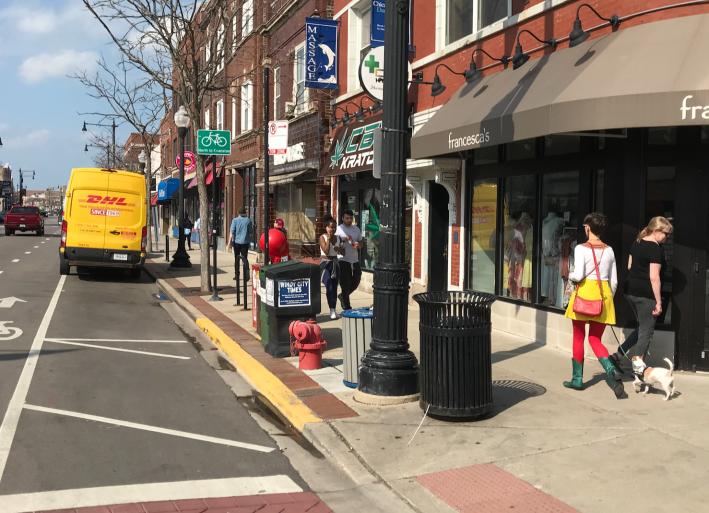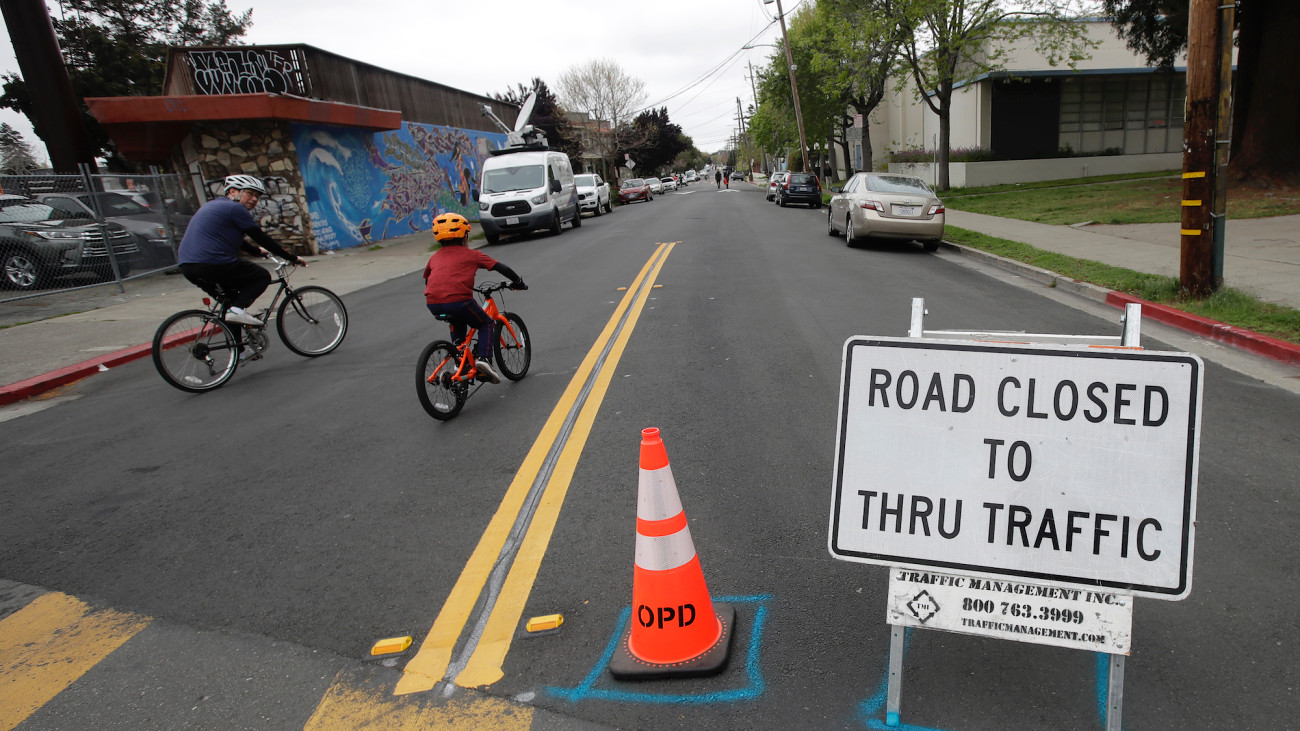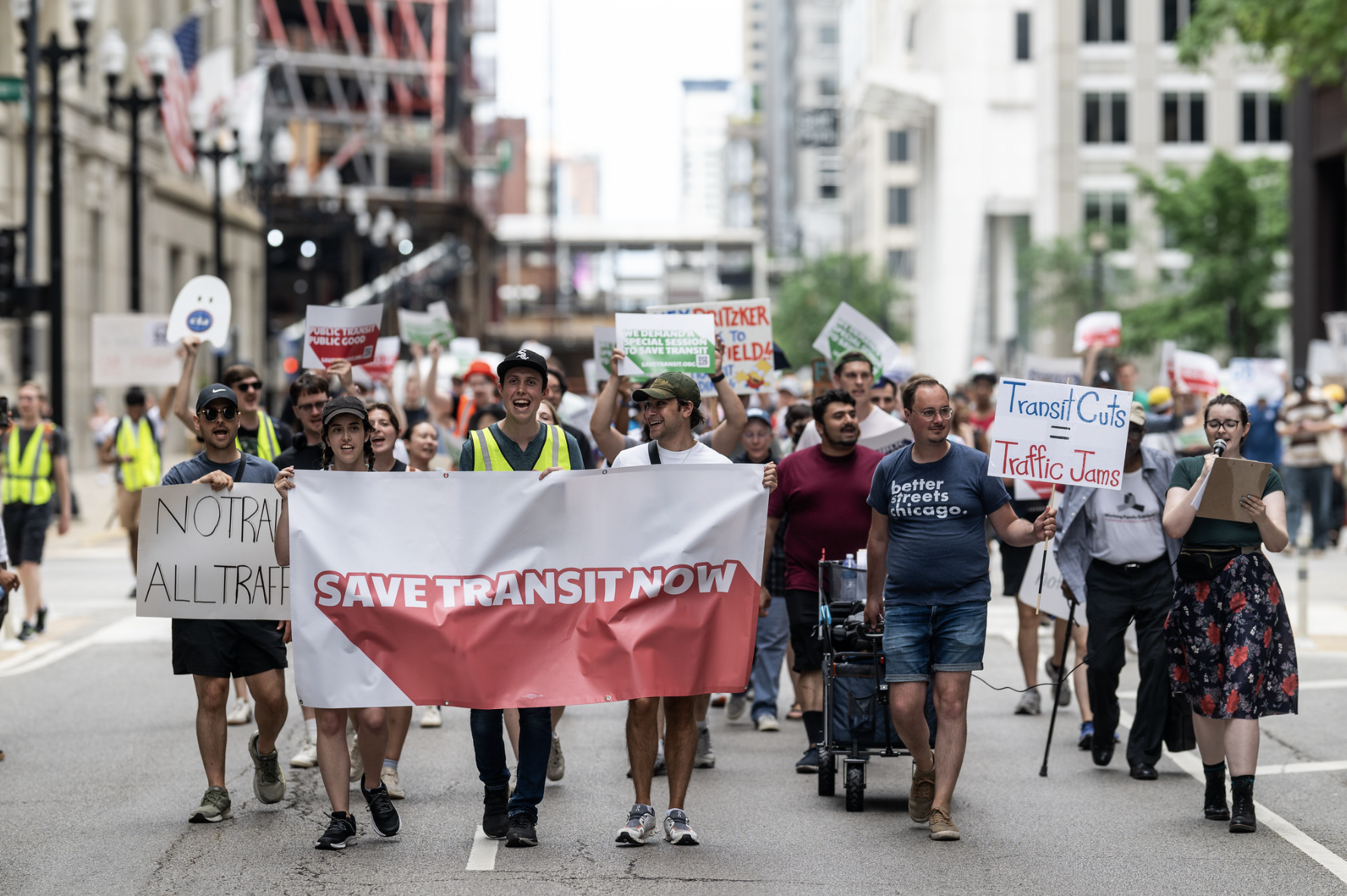
Across the country, as shelter-in-place orders to slow the COVID-19 pandemic stretch into weeks three, four and five, a growing list of cities are banning or restricting car traffic on streets and opening them up to make room for socially-distanced pedestrian activity and bicycling. In response to crowding on sidewalks, trails, and in parks, New York, Philadelphia, Washington, D.C., Boston, Madison, the Twin Cities, Denver, and Portland have all been temporarily closing stretches of roadway to through traffic to allow folks on foot and bike to safely practice physical distancing. And last week, Oakland closed a full 74 miles of residential "Slow Streets" to through traffic -- that's about 10 percent of all roadways.
Chicago officials are out of stem on this issue with their counterparts in many peer cities. The mantra from the Mayor Lori Lightfoot administration has simply been, "Stay home, save lives." However, it’s not actually realistic for everyone to stay home at all times. Obviously essential workers need to make daily commutes, and pretty much everyone else needs to occasionally venture out for food and other necessities. Moreover, Illinois' Stay at Home order also defines walking, hiking, running, and biking to maintain physical and mental health during quarantine as "essential activities."
With Chicago motor vehicle traffic down about 50 percent during the crisis, and transit ridership plummeting as people seek to minimize their viral exposure, congestion has, in many places, shifted from streets to sidewalks, where adhering to the Centers for Disease Control’s recommended six foot minimum for social distancing often forces people to step into the road. A group of artists in Toronto have built social distancing devices, nearly identical to the one Streetsblog Chicago previously envisioned, to illustrate the difficulty of maintaining triple the usual amount of personal space in an urban area.
CPD has declined to tell us how many squad cars they have guarding the lakefront at any one time: "Out of an abundance of caution and safety... we cannot comment on the specifics of policing strategy, including deployment numbers." Based on our observations, it's likely dozens. pic.twitter.com/SeD2P8uIat
— Streetsblog Chicago (@streetsblogchi) April 15, 2020
Essential workers, such as healthcare professionals; those making trips to the grocery store or pharmacy; and those simply trying to get some healthy physical activity and blow off steam during Stay at Home, need more space to safely travel on foot or by bike. As such, people who work at key Chicago civic organizations have been lobbying the Mayor’s office and the Chicago Department of Transportation to open streets for bike/walk.
Samuel Kling, a Global Cities Fellow and ACLS/Mellon Public Fellow at the Chicago Council on Global Affairs whose research centers on the role of transportation and public space in global cities, has been one such advocate. "We didn't endorse a specific, detailed plan, as the idea was simply to put [open streets] on the city's radar and push the concept,” Kling wrote in an email. “The ultimate idea is that streets can serve as a public health resource. Roadways weren't always dedicated to car traffic, and this crisis shows the value of thinking a little more broadly about the uses of streets."
"Chicago has lots of space in the form of streets, and people need space to maintain social distance—more space than most sidewalks provide," Kling added. "The idea is to match the resource to the need. Again, this was envisioned as public health measures, in line with recommendations by certain health professionals.”
As this piece was being edited, Kling tweeted out another example of why we need open streets now.
Think we don't need #openstreets in Chicago? People are speeding like crazy. Just now: SUV zooms down Paulina outside @RecycleryThe, hits car, spins onto other side of the street, knocks over 2 bike racks, parking meter, outdoor tool stand. Hope no one was hurt. pic.twitter.com/X9Oyog8j8Y
— Sam Kling (@SamKling2) April 16, 2020
Audrey Wennink, Director of Transportation for the Metropolitan Planning Council, has also been urging the city to respond to the demand for increased safe pedestrian and cycling space, and she says she's taking a long view of how the city can safely transition out of quarantine. “Metropolitan Planning Council is advocating for planning now to prepare us for the transportation transition out of the stay-at-home order,” she said via email. “We can expect that more people will want to bike or walk for transportation [as opposed to riding transit], to maintain physical distancing while traveling."
"And since the warm weather also encourages active modes, we’d hope to see the city implement ‘tactical urbanism’ type of improvements to upgrade the existing bike and pedestrian networks, like pop-up bike lanes and pedestrian paths in parking lanes," Wennink added. "This could be complemented with some pop-up neighborhood greenways—closing local streets to through traffic [as in Oakland] and slowing traffic speeds to encourage biking and walking.”

Kling also sees the value of open streets in the potentially long, uncertain climb out of quarantine and back to normal life. “Once the crisis is over, we're going to face new problems,” he said. “We may have a long transition period in which people who have options try to avoid public transit. If cities do nothing, more people are likely to ditch their train and bus commutes for solo car trips, which would bode poorly for traffic congestion, air quality, and CO2 emissions. But if cities get ahead of the problem—including by remaking their street networks and encouraging people to make trips by bike—they can create the foundation for a more sustainable, resilient city life that works better than the alternative. It's important to start these conversations now.”
Obviously, a Chicago open streets program should not be done without community input, especially from the African-American neighborhoods that have been hardest hit by COVID-19. Streetsblog is currently checking in with local POC-centered community organizations and mobility justice leaders to get their viewpoints on the issue.
But so far, there's no evidence that the city of Chicago is taking any meaningful steps towards implementing these strategies. But maybe there’s a glimmer of hope as city officials observe the success of street closures, pop-up bike lanes and expanded walkways in other major cities. CDOT provided the following statement:
The safety of all Chicagoans remains at the forefront of every decision being made by the Chicago Department of Transportation during the COVID-19 global pandemic, and the department continues following the lead of public health experts to inform any actions being taken during this time. CDOT is also paying close attention to what other cities are doing while monitoring Chicago’s traffic conditions citywide to determine any ways to improve connectivity for bikes and pedestrians or to inform changes to our transportation systems and infrastructure. Our goal is to make it easier for people to get to and from their beginning and end destinations during essential trips, which includes walking and biking. Thus far, CDOT has taken various steps to help residents, including collaborating with the city’s bikeshare partner Divvy to offer the free rides for healthcare workers, discounted memberships, and dollar Divvy rides, as well as, providing a robust map of the city’s [bikeways] to residents online. However, during Governor’s Stay at Home order, CDOT continues urging residents to please stay home if possible and save lives.
As the lessons and successes of initiatives to create more bike/ped in cities from D.C. to Bogotá to Budapest roll in, they might just serve as inspiration for Chicago to follow suit. In the meantime, for safe commuting routes while Chicago trails are closed the check out Streetsblog’s Low-Stress Lakefront Pandemic Cycling Route map and the Chicago Reader's Mellow Chicago Bike Map. The latter will be expanded citywide by May 15.
Here are some tips on preventing the spread of COVID-19, and advice for Chicagoans on what to do if you think you may have been exposed to the virus.
This post is made possible by a grant from Freeman Kevenides, a Chicago, Illinois personal injury law firm representing and advocating for bicyclists, pedestrians and vulnerable road users. The content belongs to Streetsblog Chicago and the Chicago Reader, and Freeman Kevenides Law Firm neither endorses nor exercises editorial control over the content.




